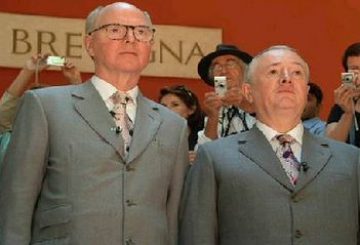Ian Houston writes from London…
The work, entitled Shibboleth 2007, runs the full 167 metres of the cavernous hall on London’s South Bank.
It begins as a crack then widens and deepens as it snakes across the room.
Colombian artist Salcedo said the work – on display to the public until April next year – symbolised racial hatred and division in society.
“I always try to relate my work to tragedy,” she said.
Salcedo added: “It represents borders, the experience of immigrants, the experience of segregation, the experience of racial hatred.
“It is the experience of a Third World person coming into the heart of Europe.”
BBC news website 9 October 2007
Colombian artist Doris Salcedo’s Shibboleth, the latest installation at the Tate Modern’s cavernous turbine hall is a huge crack in the ground that runs the entire length and width of this forbidding space, branching out in filigrees of doom, an intriguing, darkly mystifying piece, – well it was darkly mystifying, until she opened her mouth, “It represents borders, the experience of immigrants, the experience of segregation, the experience of racial hatred.” Thanks. Great, now I know what to think. No need to see it anymore really.
There is little in the world of art more deflating (aside from the news of another $100,000 plus auction for a Tim Storrier work) than hearing an artist tell you what a work represents. This ascribing of absolute meanings to a work of art by its creator really puts the kibosh on any of the allusive, associative detective work that makes art fun, dare I say it, worthwhile even. Indeed, the idea that an artist sits in their studio and decides that they are going to create a work that “stands for” something is vaguely nauseating. The language games of the art and text people aside, shouldn’t art be doing its best work when it stands beyond the interface of meaning and identity beckoning us instead into the deeper water, where we can stand no more? Where we might drown? Choking our last on the pure waters of a “meaning” beyond attribution, distillation or comprehension? Otherwise we could all save ourselves some time and have the artist email us their wall texts,
Doris Salcedo would like you to know that a crack in the floor represents borders, the experience of immigrants and the experience of racial hatred. She would also like you to know that racism is bad and that Europeans are bad for being racist.
Sure the notion is worthy, and it received plenty of press. No doubt people will read it, nodding their heads and inwardly agree “hmmm poor refugees, nasty racism” and who am I to differ with that sentiment? I rush to assure you that I don’t. But what about the poor crack in the floor? The artist has gone to so much trouble to make it and now with a few short words to the press it has become one thing, a simple placard in a protest, rather than the myriad, elusive, wonderfully poignant things it might have been.
Before she opened her mouth and started to blab, it could have been a humorous commentary on contemporary architecture, or a representation of Marxist Dialecticism, or maybe Saussure’s division between the signified and the signifier, or language and parole, or the haves and have notes or the fracture line of a soul whose heart had been broken, or a discussion of plate tectonics, maybe even the crack in the liberty bell and all of the references to American attacks on freedom around the world that would conjure. Or else it was clearly Freudian, a dirty crack in the floor, “a crack” which is a joke, which is an absence. Absent of what? The Phallus, of course. You could have visited the work and walked its length examining the depths it plunged, as you thought about your own dark nights of the soul, following the jagged architecture of its path as you traced the manner in which your life had unraveled over the years. But no – not anymore. Now it’s about racism. Good thing to, since we all know racism is bad. Still, what a killjoy. That crack could have been so much fun.

